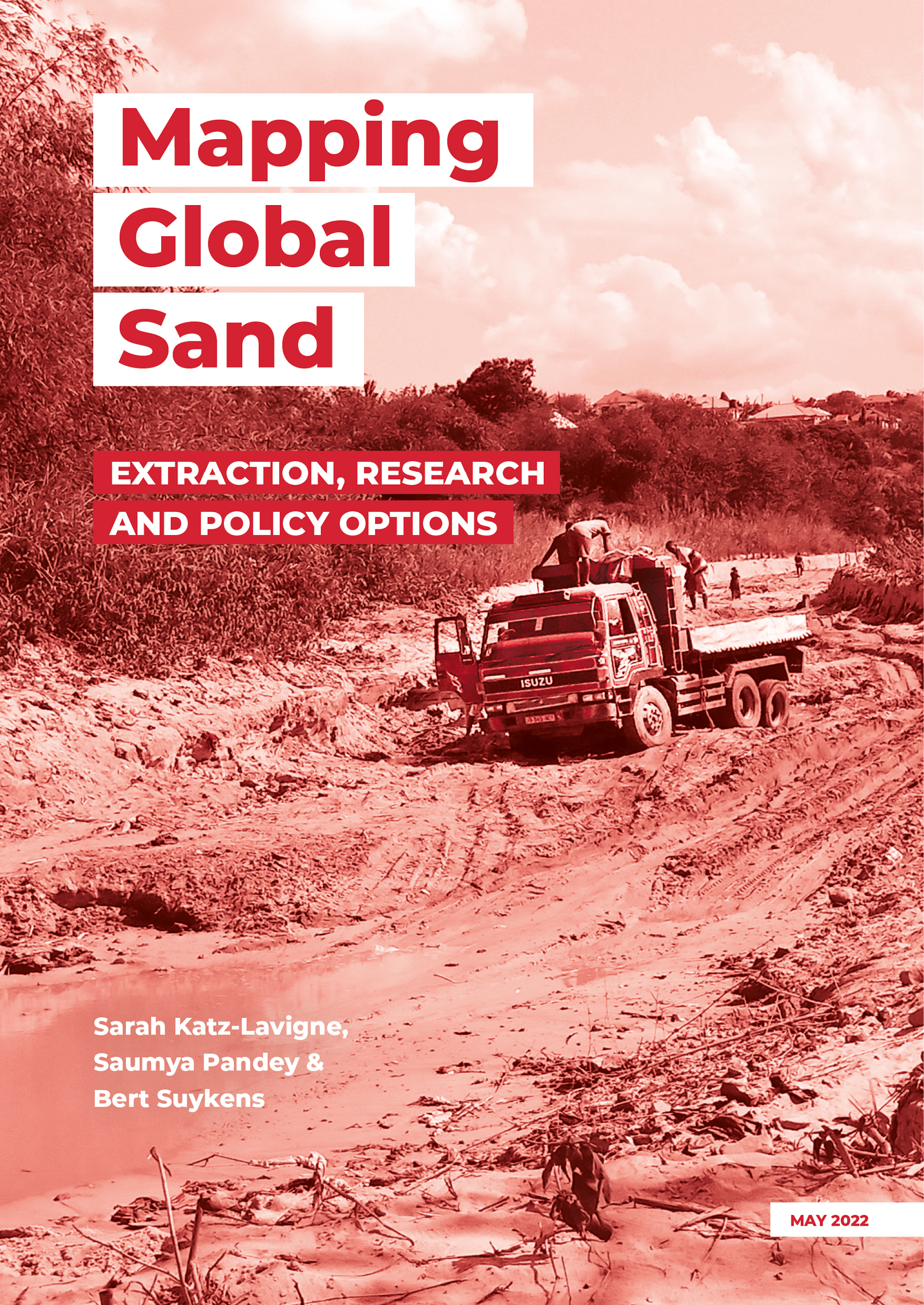Mapping Global Sand
In recent years, discussions of sand and gravel mining have been mostly based on the argument that there is an alarming increase in the demand for the resource, sand, which has subsequently led to its shortage. It is esti- mated by the United Nations Environment Programme (UNEP) that some 50 billion tons of aggregates (mostly sand, gravel and stones) are extracted every year (Koehnken, 2018; United Nations Environment Programme, 2019). Further, according to Global Aggregates Information Network (GAIN) (Lamb, Marschke, & Rigg 2019), if leading businesses in the construction sector and governments continue to extract sand at this rate, the global demand for aggregates is likely to rise to 60 billion tons per annum by 2030 (O’Brien, 2019). In addition to these reports, in March 2014, the Global Environment Alert Service (GEAS) warned the world that sand, which was once thought to be in abundance, was rarer than one thinks (Peduzzi, 2014). Some accounts show that the demand for sand has reached an insatiable level because cities and urban spaces are growing at a faster pace (Edwards, 2015). Growing demand for sand has been attributed to rise in population across the world, especially in the Global South that has led to newer infrastructure-based development projects for housing (Jaeger, 2006). However, examples of land and property speculation by investors, as well as increasing instances of homelessness across the globe cast doubt on such neo-Malthusian explanations that obscure the role of private investors in creating speculative demand. Whatever be the case, reports have consistently argued that rivers, a major source for extracting sand and gravel, will soon run out of this resource because of the excessive mining activities in these rivers, notably in places such as China and India (Bendixen, Best, et al., 2019). The anticipated shortfall in the supply of sand resources with a simultaneous increase in demand has been described by leading journalists, scientists and policy-makers as the sand ‘crisis’ (Beiser, n.d.; Pereira, 2020; Torres et al., 2017).
It is important to note that not all sand is suitable for construction or more specifically: to make concrete. Rivers are the preferred source of construction sand in many contexts. Desert sand (which might seem like an obvious solu- tion to sand shortage) is materially not suited for making concrete (Sverdrup et al. 2017. Also sand from quarries or coastal sands are used for construction purposes. Marine sand can also be used, but its salinity offers many challenges. M-sand or manufactured sand is another, more recent source of sand, made by crushing hard stones or rock, that is also fit for construction.
The quantity of aggregates extracted exceeds that of any other group of materials: it is, after water, ‘the second most used natural resource by modern human society’ (Bisht, 2021a, p. 2). The extraction of sand is the biggest form of extraction of minerals. In the past few decades the Global South has been the primary site of consumption of aggregates, with the biggest rise in use of aggregates expected in the future. During the past century consumption of sand (closely linked to economic growth) has shifted spatially, with most now in the Global South, especially China and India. From 1970-2010, the consumption of non-metallic minerals in Europe and North America became stable, while extraction grew massively in the Asia-Pacific; Africa and Latin America exhibited growing extraction but stayed below the global average for consumption per capita. The 21st-century boom in infrastructure occurred especially in Brazil, Russia, India and China. Expanding commodity frontiers of sand thus shifted from Global North to South (Bisht, 2021a). Technological change has meant that while some places have a long tradition of extracting river sand for construction, there has been a significant shift in how it is done. Rather than buckets, people use machines like loaders, and boats and trucks for transport (Lamb, Marschke, & Rigg, 2019)
This report aims to contribute to this global debate on sand and sand gover- nance. It focuses on construction sand and maps three interrelated elements: (1) the global, regional and country specific extraction of and trade in sand; (2) the current state of the social-scientific literature on sand extraction, as well as key policy reports on the topic; (3) other governance efforts in the extractive industries to provide jumping-off points for policy intervention on sand in light of sand-specific dynamics.




